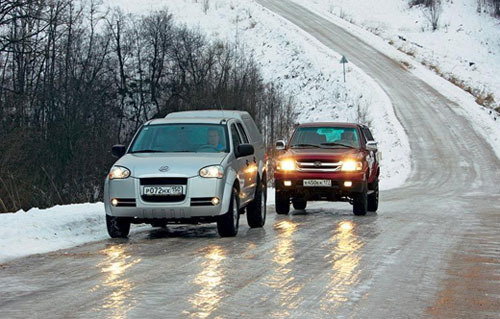
The car has two main modes of braking-the service brake and the engine (there is, of course, contact braking, but this is an emergency). However, if the service brake is braked, the braking of the engine causes many disputes to be caused by the engine. Some consider this type of braking to be more reliable and more efficient for the car, while others consider that the braking of the engine increases the load on the main components and units of the vehicle. What is engine braking and how to correctly execute it?
What is engine braking and how to correctly execute it?
The engine braking is the release of the pedal of the gas in order to decelerates the vehicle and shall be carried out with the gear engaged. During engine braking, the engine does not get a combustible mixture, but it continues to receive the torque from the transmission, so it becomes its energy source from the energy source, slowing down the transmission and then the wheels.
If the engine requires little or short braking, it can be carried out on the same gear as the vehicle. In the case of long-term engine braking, the process may be downshift as the traffic is reduced and then, if necessary, end the brake application.
When is the engine braking?
There may be many cases on the road where it is much more convenient or safer to brake the engine than the service brake.
For example, if you approach a traffic light on which the red light is burning at that moment. In this case, it is not necessary to press on the brake, it is enough just to release the pedal of the gas and to move quietly to the traffic light. If necessary, final braking may be performed by the brake pedal already.
In addition, short-term engine braking is permissible if a car is reconfigured in front of you: to ensure a safe distance, it is enough just to stop the acceleration. Once the car is in line, you'll be able to accelerate again.
On a protracted descent, the engine braking is much more efficient than the use of the service brake. The fact is that with the long brake application, the brakes can be overheated, which means that the brakes will become inoperable, and when the engine does not stop, it will not happen.
The engine shall be used at the failure of the service braking system. In some situations, engine braking is the only way to stop a car.
Engine performance plus or minus
The main advantage of engine braking is that the braking forces are more evenly distributed than when the brake pedal is applied. Accordingly, the machine remains manageable, so it is possible to leave the driveway minimum on the wet road or in the ice.
However, there is an engine braking and a number of cons. First, stop lamps when braking is not triggered by the engine, which means that the next rear of the driver may not be able to respond to your manoeuvre. Second, the performance and result of engine braking is not always predictable, as they depend on a variety of factors. In addition, when braking the engine, it is necessary to correctly select the point of gear shift: it is not possible to switch from the third to the fourth to the first gear, as otherwise the machine can simply go into the skid or go to the meeting. In addition, such manoeuvres could cause irreparable damage to the transmission and costly repairs.
Engine brake or coast down?
In contrast to the braking of the engine, the roll shall be carried out in neutral gear. Many drivers are confident that this movement saves fuel. However, many car instructors do not recommend moving the coast down, because in a neutral gear the machine becomes less manageable, and in difficult conditions it can end with an oversteer and an accident.







